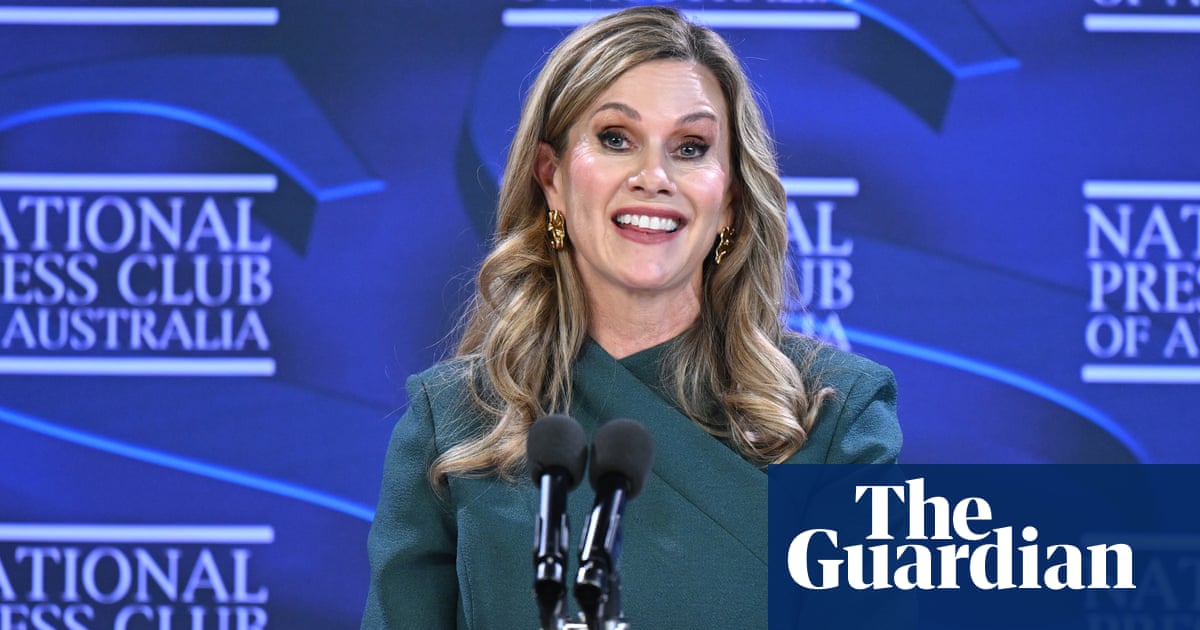YouTube has criticised calls for it to beincluded in the under-16s social media ban, accusing the nation’s online safety boss of ignoring parents and teachers.
The eSafety commissioner, Julie Inman Grant, has urged the government to rethink its decision to carve out the video sharing platform from the minimum social media age which will apply to apps such as TikTok, Snapchat and Instagram.
YouTube has said the government should stick by its draft rules and disregard Inman Grant’sadvice.
“Today’s position from the eSafety Commissioner represents inconsistent and contradictory advice, having previously flagged concerns the ban ‘may limit young people’s access to critical support’,” YouTube’s public policy and government relations manager, Rachel Lord, said.
Sign up for Guardian Australia’s breaking news email
“eSafety’s advice ignores Australian families, teachers, broad community sentiment and the government’s own decision.”
Inman Grant’s speech to the National Press Club on Tuesday set out more details of the social media age limit – which she referred to as a “delay” rather than a “ban” – to come into force in mid-December. While there are still no details of how social media users would be age checked, she said Australians should expect “a waterfall of tools and techniques”, manylikely to include artificial intelligencelike analysing facial or hand features.
Guardian Australia is aware several social media platforms have privately expressed concern about a lack of information about their obligations under the laws, and raised doubts they would be able to build such age assurance systems with less than six months until the deadline.
Inman Grant indicated age verification would take place on individual platforms, rather than at the device or app store level, adding that many social media sites already used tools to estimate or verify users’ ages. She said platforms would need to report their progress to eSafety, and demonstrate they were using tools to verify users and remove children.
However Inman Grant also conceded systems would not be perfect: “We know that companies aren’t going to get it right the first time. None of these technologies are foolproof, but again, if they’re using them in tandem with one another, they’ll have greater levels of success.”
“While the social media delay will not solve everything, it will create some friction in the system … this world-leading legislation seeks to shift the burden of reducing harm away from parents and carers and back on to the companies themselves,” Inman Grant said.
“We are treating big tech like the extractive industry it has become. Australia is legitimately asking companies to provide the lifejackets and the safe guardrails we expect from almost every other consumer-facing industry.”
YouTube had beenpledged a carve-out by former communications minister Michelle Rowland, who listed it alongside Google Classroom and online services from ReachOut and Kids Helpline as being exempt from the ban because they help children “get the education and health support they need”.
Federal government sources said the communications minister, Anika Wells, would decide within weeks whether to take the commissioner’s advice to amend the draft rules.
Sign up toBreaking News Australia
Get the most important news as it breaks
after newsletter promotion
YouTube maintained its service is about video distribution and watching content, not social interactions.
Lord said YouTube had been a leader in building age-appropriate products and responding to threats, and denied it had ever changed policies to negatively impact younger users. YouTube said it removed more than 192,000 videos for violating its hate and abuse policies in the first quarter of 2025 alone, and has designed age-appropriate products specifically for young children.
Lord said the government should not change course on exempting YouTube from the ban.
“eSafety’s advice goes against the government’s own commitment, its own research on community sentiment, independent research, and the view of key stakeholders in this debate.”
The shadow communications minister, Melissa McIntosh, said the government must provide more clarity on the looming reforms.
“In or out, the government needs to make its position clear on the requirements for social media platforms and families to protect our kids from the vitriol that is so prevalent online,” she said.
“There are more questions than answers right now, including what verification technology will be required, which platforms are in or out and what constitutes platforms taking reasonable steps to implement social media age minimum standards by 10 December 2025.”
